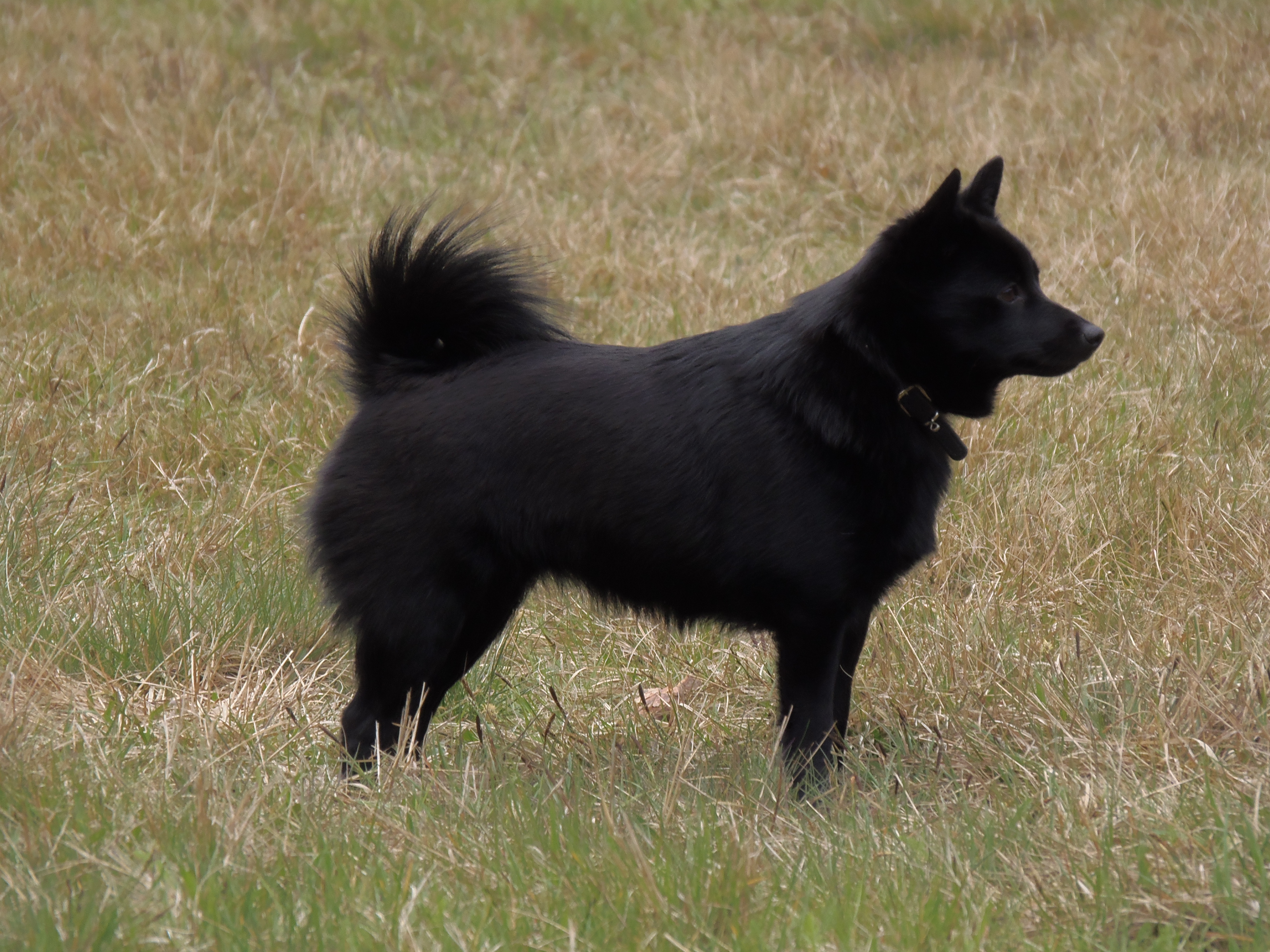
The Breed History
The Schipperke originates in Belgium, and is derived from Belgian
Sheepdogs rather than Pomeranian or Spitz stock as some report,
though it is possible some outcrosses occurred. These are close
relatives to the Groenendael. Records of the breed extend back
into the 1600s, though until 1888 they were known as Spits. About
the same time, the first breed specimens arrived in America. AKC
recognition occurred in1904. The word Schipperke derives from the
Flemish word for "Little Captain, or Little Bargeman". Pronunciation
of the breed name varies significantly; regional pronunciations
include: Skip-er-kay, Skip-er-key, Ship-er-kee, Sheep-er-kay, and
Sheep-er-ker.
Breeding for Function
Originally derived from Belgian sheep herding dogs, the Schipperke
dogs were selected for small size and for watchdog qualities.
They were also considered excellent for vermin control. They were
popular with boat captains and tradesmen. Later in America, they
were reported as being hunting dogs in the Midwest, successfully
used for rabbits, raccoons and opossums.
Physical Characteristics
Height at Withers: female 10-12" (25.5-30.5 cm), male 11-13"
(28-33 cm).
Weight: 7-16 lb (3-7.5 kg).
Coat: The thick black outer coat is straight and stands off, with
a prominent ruff, jabot, coulotte and cape. These distinct coat
features must be well developed in order to meet the breed
standard. The undercoat is short, dense and may be lighter than the
black outer coat.
Longevity: 13-16 years
Points of Conformation: Compact square, cobby, heavy set
conformation, a profuse dense black coat, taillessness and foxy
appearance all characterize this breed. They are also noted for their
sharp, peppy personalities. Ears are high set, triangular, small and
pricked. The eyes are oval, brown and close set, the face and head
are fox-like in structure and the stop is defined. Nose is black and
small. The neck is short and muscular and head carriage is high.
The topline is level to slightly sloping towards the rear, but the coat
makes the dog appear higher in the withers than it really is. Thorax
is broad and the ribs are well sprung. Though some are born tailless,
those born with tails are usually docked to within 1" of the body
wall. Dewclaws are usually removed on forelegs and are removed
from the hind limbs. Limbs are straight boned, feet are compact and
small. Nails are black. The gait is smooth, low and fast.
Recognized Behavior Issues and Traits
Reported breed characteristics include: Good with children but
a plucky guardian of family and home (or boat). Known for his
curiosity, high intelligence, stubborn streak and aloofness with
strangers, the Schipperke has low grooming needs, and dogs
typically shed twice a year. This type of dog needs close human
companionship. These dogs are also known for their high activity
levels, and they need mental stimulation or they will develop
boredom vices such as chewing, barking or digging. They should be
off leash only in a fenced enclosure. Schipperkes may see small pets
as prey and should be socialized early to other pets, especially dogs,
and to the children of the household. They have a high barking
tendency and may snap if irritated.
Normal Physiologic Variations
In a UK study 27.7% of litters were born via Cesarean section.
Drug Sensitivities
None reported
Inherited Diseases
Hip Dysplasia and Legg-Calve-Perthes: Polygenically inherited
traits causing degenerative hip joint disease and arthritis. OFA
reports 5.5% affected with hip dysplasia, and 2.0% affected with
Legg-Calve-Perthes disease.
Patella Luxation: Polygenically inherited laxity of patellar
ligaments, causing luxation, lameness, and later degenerative joint
disease. Treat surgically if causing clinical signs. OFA reports 5.0%
affected.
Elbow Dysplasia: Polygenically inherited trait causing elbow
arthritis. OFA reports 1.8% affected.
Mucopolysaccharidosis IIIB (MPS IIIb): Autosomal recessive
metabolic storage disease causing cerebellar ataxia, mildly
dystrophic corneas and small peripheral foci of retinal degeneration.
Onset between 2-4 years of age. The disease is progressive and
there is no effective treatment. A genetic test is available.
Disease Predispositions
Hypothyroidism: Inherited autoimmune thyroiditis. 10.0% positive
for thyroid autoantibodies based on testing at Michigan State
University. (Ave. for all breeds is 7.5%).
Persistent Pupillary Membranes: Strands of fetal remnant
connecting; iris to iris, cornea, lens, or involving sheets of tissue. The
later three forms can impair vision, and dogs affected with these
forms should not be bred. Identified in 5.06% of Schipperkes CERF
examined by veterinary ophthalmologists between 2000-2005.
Collapsing Trachea: Caused by diminished integrity of the cartilage
rings in the trachea. Can produce increased coughing, stridor, and
respiratory distress. Dorn reports a 5.21x odds ratio versus other
breeds.
Cataracts: Anterior cortex punctate cataracts predominate in
the breed. Identified in 4.49% of Schipperkes CERF examined by
veterinary ophthalmologists between 2000-2005. CERF does not
recommend breeding any Schipperke with a cataract.
Distichiasis: Abnormally placed eyelashes that irritate the cornea
and conjunctiva. Can cause secondary corneal ulceration. Identified
in 3.37% of Schipperkes CERF examined by veterinary ophthalmologists
between 2000-2005.
Demodicosis: Dorn reports a 1.93x odds ratio of developing
demodectic mange versus other breeds. This disorder has an
underlying immunodeficiency in its pathogenesis.
Vitreous Degeneration: A liquefaction of the vitreous gel which
may predispose to retinal detachment resulting in blindness.
Identified in 1.40% of Schipperkes CERF examined by veterinary
ophthalmologists between 2000-2005.
Retinal Dysplasia: Retinal folds, geographic, and detachment are
recognized in the breed. Can progress to blindness. Identified in
1.12% of Schipperkes CERF examined by veterinary ophthalmologists
between 2000-2005.
Idiopathic Epilepsy: Inherited seizures can be generalized or partial
seizures. Control with anticonvulsant medication. Reported as a
problem in the breed on the SCA website. 1.98% of Schipperkes
presenting for the first time to veterinary school hospitals are
diagnosed with idiopathic epilepsy.
Pemphigus Foliaceus: There is a significantly higher risk of
developing pemphigus foliaceus versus other breeds. Typical lesions
include dorsal muzzle and head symmetric scaling, crusting, and
alopecia with peripheral collarettes, characteristic footpad lesions,
with erythematous swelling at the pad margins, cracking, and
villous hypertrophy. Average age of onset is 4.2 years. Treatment
with corticosteroid and cytotoxic medications. One-year survival
rate of 53%. Unknown mode of inheritance.
Diabetes Mellitus: Sugar diabetes is caused by a lack of insulin
production by the pancreas. Controlled by insulin injections, diet,
and glucose monitoring. The Schipperke is reported as a breed
predisposed to developing DM between 4-14 years of age.
Progressive Retinal Atrophy (PRA): Inherited degeneration of
the retina, causing blindness. Form, age of onset, and mode of
inheritance are not defined. CERF does not recommend breeding
any Schipperke with PRA.
Black Hair Follicular Dysplasia: Rare condition causing loss
of black hairs beginning around 4 weeks of age. Total loss of all
black hair by 6-9 months of age. No treatment. Unknown mode of
inheritance.
Color Dilution Alopecia, Pancreatitis, and Prognathism are
reported.
Isolated Case Studies
Spinal Arachnoid Cyst: Two Schipperkes were diagnosed with
dorsal midline spinal arachnoid cysts localized either at the second
to third caudal vertebrae or between the eighth and tenth thoracic
vertebrae. Surgical removal was curative.
Nemaline Rod Myopathy (NM): An 11 year old Schipperke
presented with exercise intolerance. Findings included abnormal
electromyography, and the presence of nemaline rods in
fresh, frozen, and glutaraldehyde-fixed biopsies from proximal
appendicular limb muscles.
Congenital Pulmonary Emphysema: A 4-month-old, intact
female Schipperke was presented for evaluation and treatment
of subcutaneous (SC) emphysema. Radiographs revealed
pneumomediastinum and SC emphysema. Exploratory thoracotomy
revealed an emphysematous right middle lung lobe. Lobectomy of
the right middle lung lobe resolved both the pneumomediastinum
and SC emphysema.
Genetic Tests
Tests of Genotype: Direct test for MPS IIIB is available from
PennGen.
Direct test for black, chocolate/brown, and fawn/cream coat colors
are available from VetGen.
Tests of Phenotype: CHIC Certification: Required testing includes
thyroid profile including autoantibodies, patella evaluation, and
CERF eye examination. Optional recommended tests include genetic
test for MPS IIIB, congenital cardiac disease evaluation, and hip
radiographs.
Recommend elbow radiographs.
Miscellaneous
- Breed name synonyms: Skip, Little Skipper, Spits (historical)
- Registries: AKC, UKC, CKC, KCGB (Kennel Club of Great Britain),
ANKC (Australian National Kennel Club), NKC (National Kennel Club)
- AKC rank (year 2008): 91 (639 dogs registered)
- Internet resources: The Schipperke Club of America Inc.:
www.schipperkeclub-usa.org
Schipperke Club of Canada: www.schipperkecanada.net
The Schipperke Club (UK): www.schipperkeclub.co.uk
Schipperke Health Foundation: www.schipperkefoundation.org
Photo Gallery of Breed - Schipperke - Dog Breed

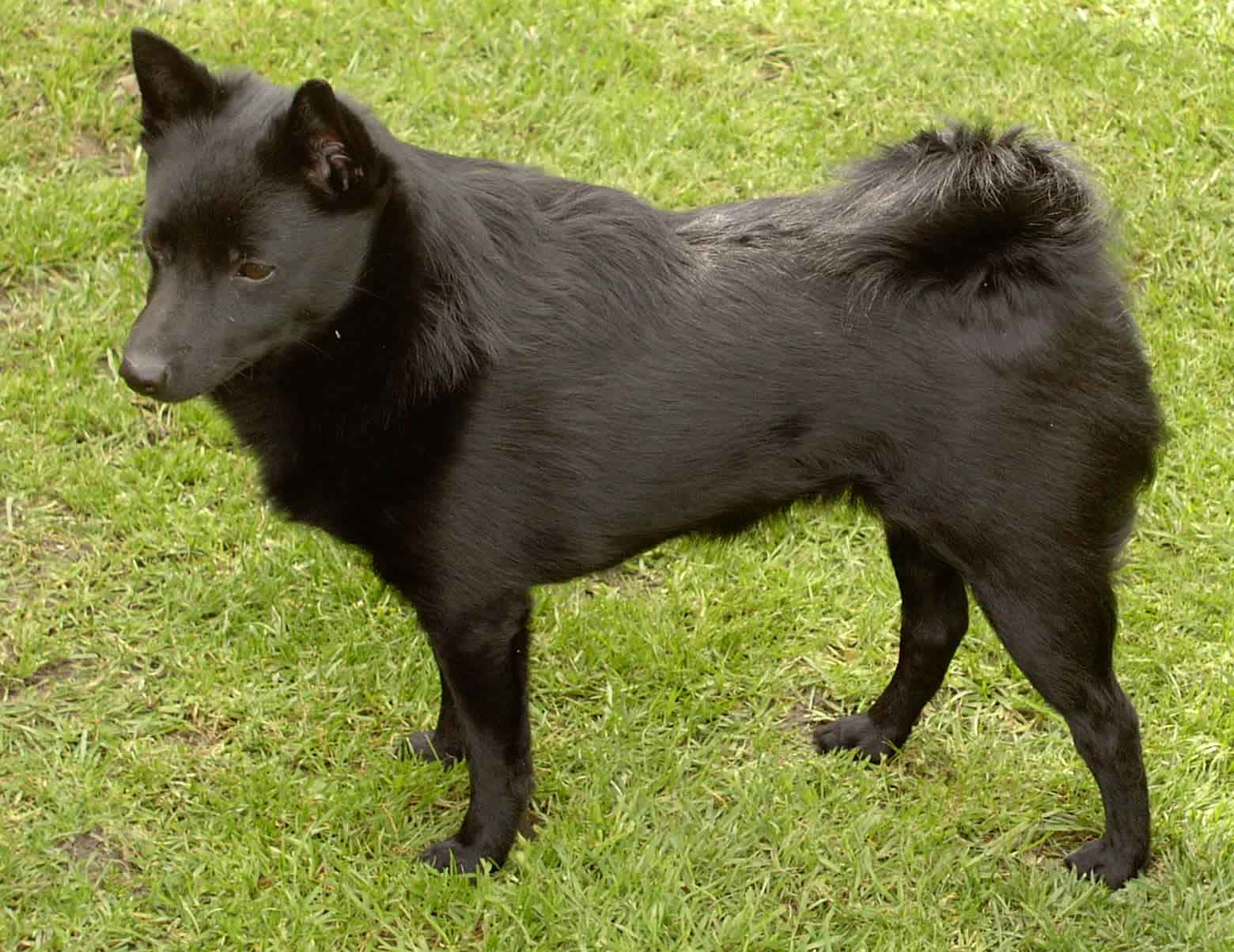

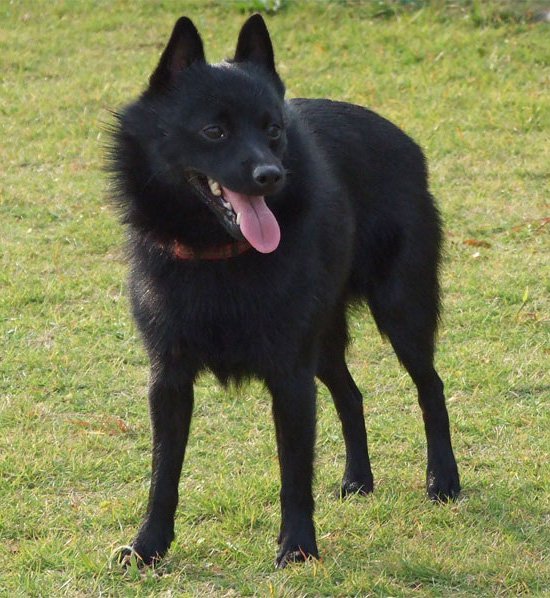
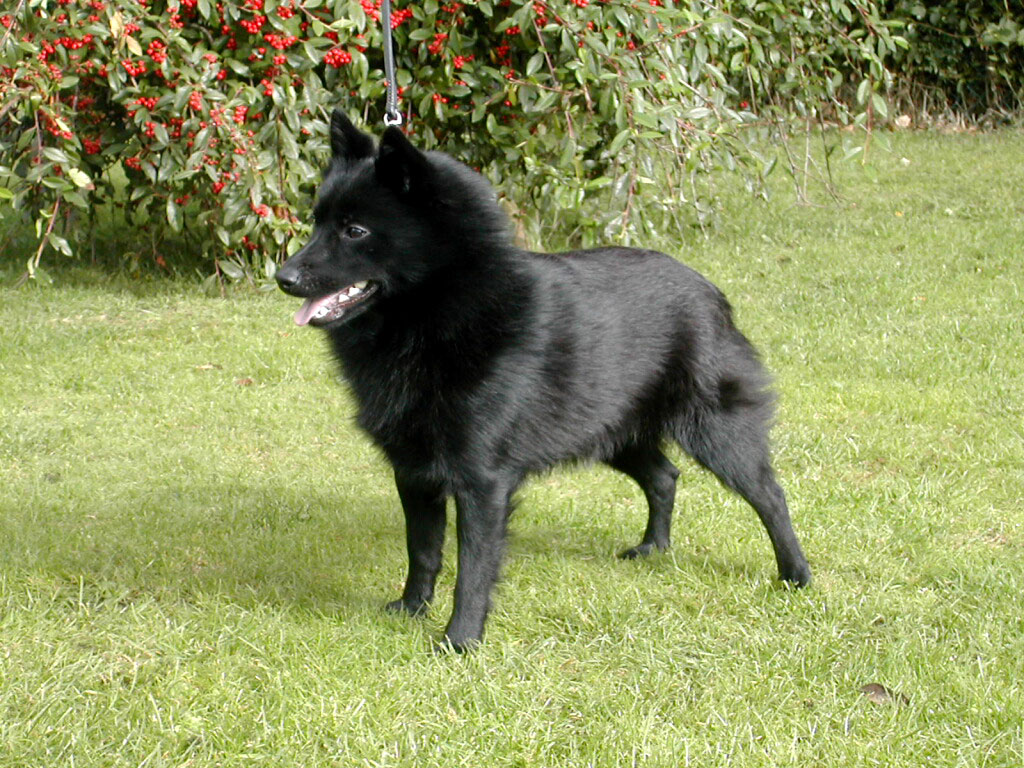
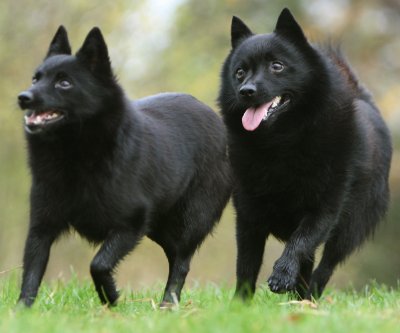


 Animalia Life
Animalia Life